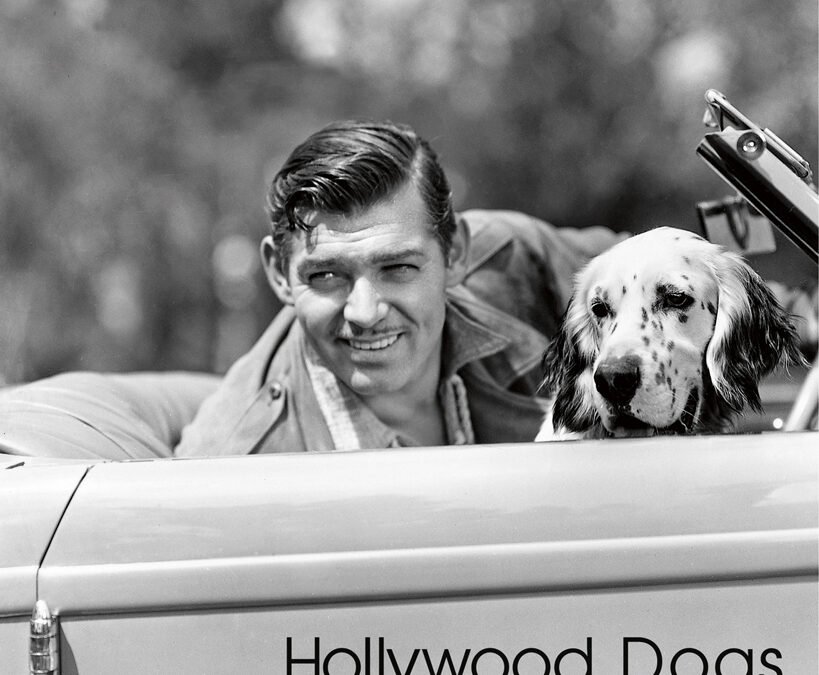
These stunning images of some of Hollywood’s most iconic stars and their beloved dogs are possible the best thing we’ve ever seen” – Marie Claire Hollywood Dogs showcases a fine selection of photographs from the famous John Kobal Foundation. Taken between 1920 and 1960 during the Golden Age of Hollywood, they feature stars including Humphrey Bogart, Buster Keaton, Elvis Presley, Tony Curtis, Sophia Lauren, Elizabeth Taylor, Rock Hudson, Ava Gardner, Shirley Maclaine, Frank Sinatra, Grace Kelly and Audrey Hepburn posing with dogs of every stature and breed. In almost every case, these stunning photographs have never been seen before now. As much as the Hollywood studio system tried to control every aspect of their stars’ lives, there was nothing the bosses could do to manipulate their illustrious employees’ responses when photographed with their dogs. Hollywood Dogs celebrates this special relationship between these famous owners and their animals. Often caught off-guard, and almost always relaxed and natural, these are photographs of the Hollywood stars as real people. Amongst the images are some of the most famous dogs in Hollywood films: Lassie; Asta; Rin Tin Tin and Toto from the Wizard of Oz. There are also a few carefully-set-up publicity shots, such as Frank Sinatra on the set of Pal Joey, and Jean Harlow accessorized with a large hat and two Old English sheepdogs. Each image has been researched to identify the breed and wherever possible, the name of the dog, and Catherine Britton has included intriguing details about the location and background to the photograph.
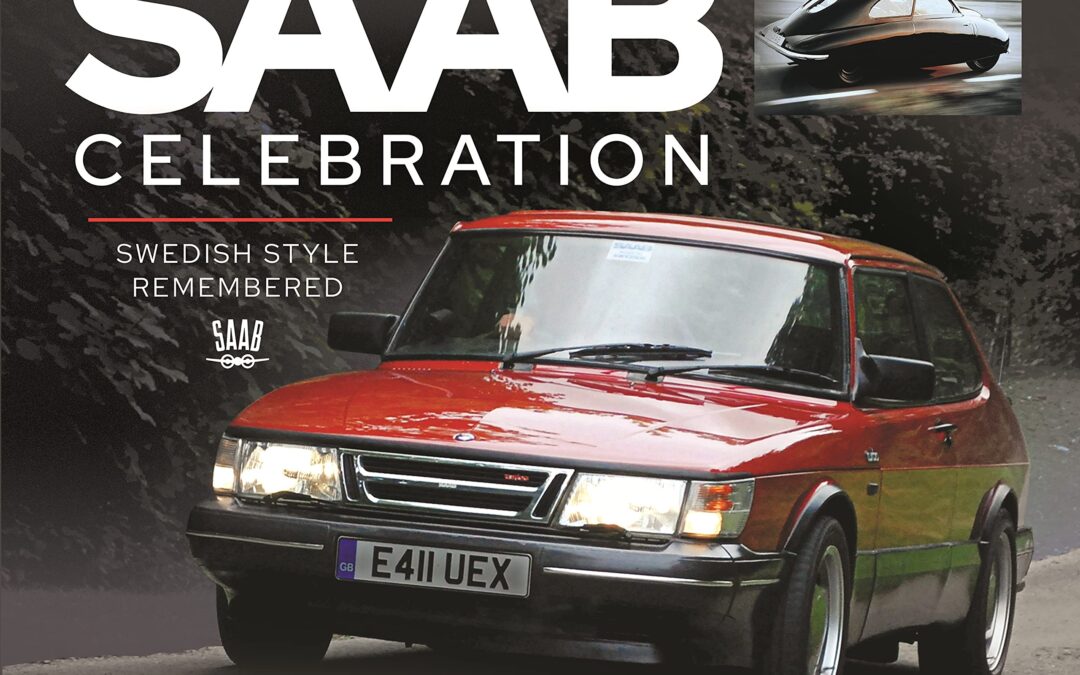
Saab has gone, but its cars and its loyal band of owners remain. In this photographic album, internationally known Saab author and commentator Lance Cole celebrates all things Saab.
In a collection of over 200 photographic images accompanied by a detailed yet engaging commentary, the book delivers a record of Saab from its first car to its last. The engineering, design, and ethos of Saab’s cars across the generations are captured in all their glory.
The author of many Saab articles and several Saab books, this is Lance Cole’s new view on Sweden’s other car maker – one that really did build cars to a different standard.
Saab Celebration is designed to be a memorial companion for the Saab fan. If you like Saabs, then enjoy this tribute to all things Saab.
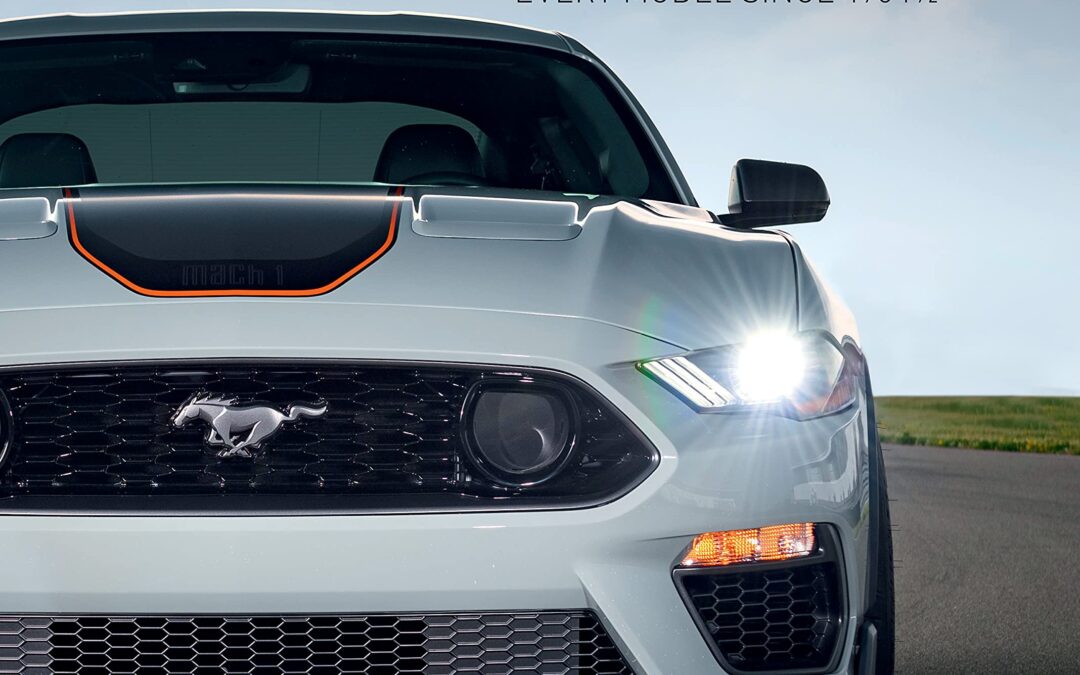
REVISED & UPDATED 2021 EDTION
This lavishly illustrated, officially licensed reference work walks you through Mustang’s nearly 60 years of continuous production—a rich and varied history nearly unmatched in the automotive world.
Ford’s Mustang is America’s most iconic pony car. According to many, it is the only vehicle that really actually deserves the title “pony car.” From the first six-cylinder Mustang of 1964-1/2 through fire-breathing, world-beating Boss and Shelby versions of the 1960s and early ’70s, to today’s Mustang Mach 1 and Shelby GT500, The Complete Book of Ford Mustang offers an in-depth look at the prototypes and experimental models, the anniversary and pace cars, and the specialty packages for street and competition driving that have made the Mustang an automotive legend for nearly 60 years.
Created in cooperation with Ford and providing extensive details, specifications, and photographic coverage, this book is the ultimate resource on America’s best-loved pony car. Any muscle-car enthusiast, motorsports fan, or car collector will want this book in their collection.
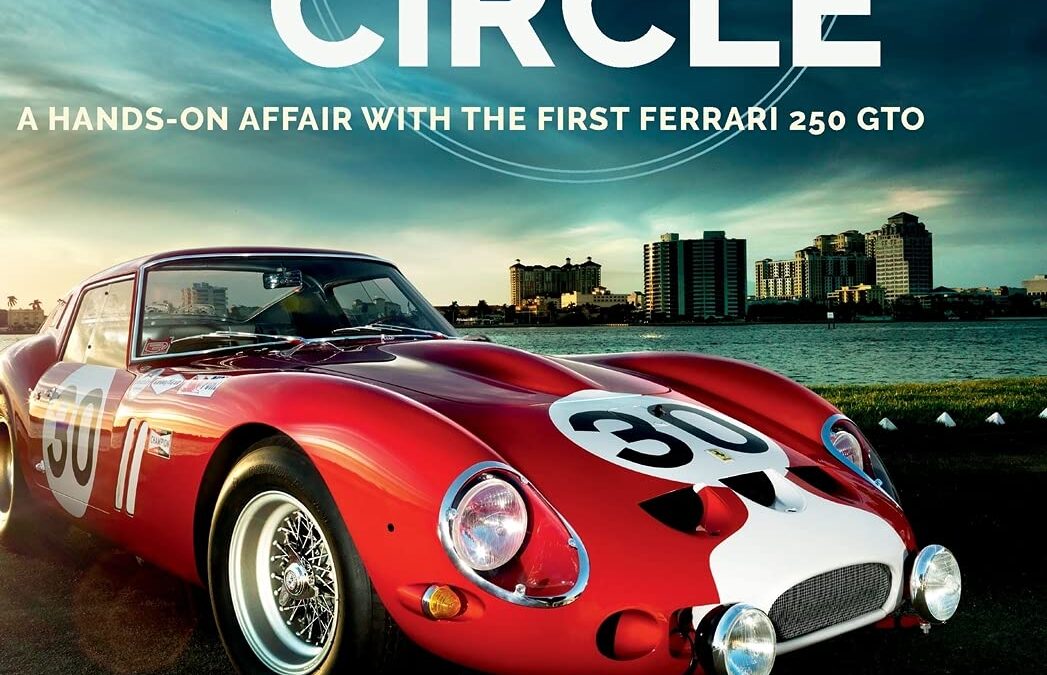
FULL CIRCLE: A Hands-on Affair with the First Ferrari 250 GTO may be the first car memoir – a car revered for its international racing performance and artistic mystique – the first Ferrari 250 GTO, born in Italy in 1962.
It is also the memoir of a man, himself unique – Larry Perkins, a rocket scientist /car racer /artist. His stories chronicle how The Car (a.k.a. “Sophia” named for the elegant Italian bombshell Sophia Loren) pops in and out of his life. These events, and the people associated with them, create a series of full circles in their shared journey.
Full Circle: the past becomes future becomes past, illuminating words to the famous song… “When Everything Old is New Again”.
While Larry was working on the Apollo program to land a man on the moon, and later the Viking Mars Lander program and other space missions, Sophia and Larry had an on-again off-again relationship – an “affair” so to speak – for over 50 years. They found each other in 1963 and formed a surprising dynamic of man-machine synergy. Life was fast and furious, fun and full of trophies. When it seemed destined to be over, Larry sold the Ferrari in 1966 for a mere $3600. The racing duo lost track but were re-united and then parted again. Finally … unbelievably … Sophia found Larry when they were both a little older. With the spark alive, their racing history was re-born in a most spectacular way. Each was transformed by the other.
The memoir starts with a man searching for the perfect race car and develops into a previously unrecorded history of s/n #3223 GT with racing tales. Larry and his wife, Petra, tell of an irresistible GTO attraction and adventures during the exciting era of ’60s sports car racing. (Petra first saw the Ferrari at a memorable race with a fiery crash at Sebring, Florida, when she was 15, but did not meet its driver for 15 more years.)
The authors show the exhilaration of key races and an anecdotal chronology of #3223 with photos, some never seen. They examine what a race driver is really like, the attributes of a highly competitive personality, and the unrelenting dedication to Winning. After all, it was not easy for a small privateer – someone who had started racing relatively late in life (with a consuming day job) – to compete with the likes of racing champions Phil Hill, Pedro Rodriquez, Mario Andretti, and Dan Gurney.
The book emphasizes the value of teamwork. “Doing the impossible” – in racing or rocketry – demands the best of humans working together to render perfect machines. This is an intimate account about the people who made The Car what it ultimately became.
How did this car acquire its timeless aura of mystique?
How cool is it to drive such a powerful and exquisite piece of machinery?
To what degree can a car be considered fine art?
What happened to Larry and why did it turn out to be so spectacular, almost eclipsing his early successes in racing the GTO? When and Where did all this happen?
And best of all, Who are the passionate people that made it happen?
Full Circle: A Hands-On Affair with the First Ferrari 250 GTO answers these questions and provides readers with a thrilling personal play-by-play of racing the very first Ferrari GTO for the very first time.
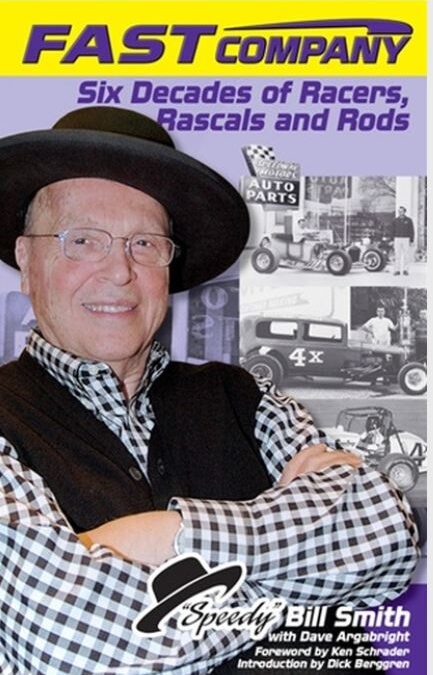
If you’re a racer, a race fan, a hot rodder, a businessman…heck, just about anybody who loves going fast will enjoy Fast Company. Speedy Bill Smith was an icon in both auto racing and the world of automotive performance, and in this book he shares the great stories and experiences of his amazing, unlikely life. He survived a couple of near-death experiences (literally), parlayed $300 into a performance empire, chased race cars and hot rods from coast-to-coast, rubbing shoulders with countless characters and rascals over the past 60 years.
This is an American success story…a little off-color, a little politically-incorrect, and a little over the top. As a car owner, Speedy Bill raced to win, and didn’t mind if he got under the skin of his competitors…in fact, he LOVED getting them fired up. Along the way he won too many races to count, made a ton of friends (and maybe just a few who weren’t so friendly), and rewrote the record books on many occasions.
Over the past ten years, Dave Argabright has teamed up with some of racing’s greatest personalities…Brad Doty, Jack Hewitt, Earl Baltes, Chris Economaki, and Doug Wolfgang. You’ll find Dave’s unmistakable style on these pages, and you’ll hear Speedy Bill’s voice in every word.
Jan Opperman? The real story. Surviving in business? The unvarnished truth about what it takes. Rough-and-tumble racing? Without pulling a punch. Wild and outrageous people? Right here, in the flesh.
More than anything, this is a book that will entertain and inform you. No B.S., no sugar-coating…just the world according to Speedy Bill!
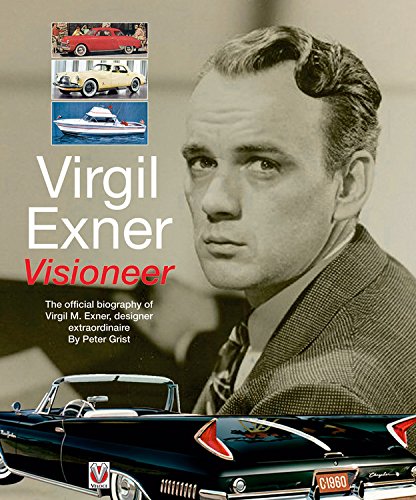
The story of a man that brought his own personal style to the world of industrial design, from automobiles to powerboats. Some 50 years after his design masterpieces wrested styling leadership away from General Motors – Harley Earl. Thirty four years after his untimely death, Virgil Exner’s name still remains inexorably linked to the Chrysler Corporation in the minds of car enthusiasts worldwide.
For an all too brief period, Exner’s name epitomised all that was great and exciting in America. His thrilling automobile designs from the mid-fifties took the world by storm and put Chrysler at the top. His work was nothing less than a revolution. Until the mid-fifties, engineers, creating cars that were reliable but invariably staid and conservative, had dominated auto design. Exner introduced to Chrysler, firstly with his ‘idea cars’ then with production models, vehicles that were wanted for their looks but at the same time, were soundly engineered; automobiles that carried classic proportions and gave the illusion of movement even whilst stationary. His design of the 1947 Studebaker established the design pattern for all modern cars and was a huge success. Along with automobile styling, his talents stretched to many other areas of industrial design, from trains to trucks and boats to Buicks.
This book gets behind the character of the man, his strengths and weaknesses, his personal tragedies and his vision of modern transport. Uncover why he set up in competition with Raymond Loewy, get the real facts behind historic inaccuracies and why he was made scapegoat for the sales disaster of the early sixties, Then delight in his fine artwork and his love of motor racing. With many previously unseen works of art and family photos among the 150 colour images throughout this is a unique and fascinating insight into a pivotal player in the development of the modern automobile.

The Science of Speed Book 3
A Driver’s Step-by-Step Guide to Optimizing Complex Sections Through the Physics of Racing
- Learn how the physics of racing can be applied to advanced track sections. We show you the rules needed for double apexes and chicanes, as well as how to link them in complex sequences. Plus you’ll learn the surprising science of optimizing straights.
- Finally, the last section will really put you to the test as we break down some of the most complex corner sequences in the world. If you can solve these puzzles, you will understand how to drive anything.
- Learn how there is no such thing as a throwaway corner and how every single section of a track can be driven to perfection.

What really happened at British Leyland (BL)? Was it ‘just’ the cars, or were other factors vital to the story? Who really was to blame for BL and MG Rover’s death?
The ‘truth’ about BL is deeper than its cars – were ultra- Left-wing plots to topple BL and British society real? Did secret deals and political intrigue really exist? Was it Labour or Conservative powers who ‘killed’ BL, or was it BL itself? How was it that BL’s design genius was hobbled?
Author Lance Cole lifts the bonnet on BL and presents a forensic yet easy to read new analysis in a story of BL, its cars, and the era of their motoring as powers on the political Left and Right waged war, sometimes even with themselves.
Here is a book about cars and more, a conversation on all things BL: this is a new account of a classic British story told across a trail of evidence in a British industrial and political drama.
Many mistakes made BL, but some of the cars were superb, the designs of genius, the engineering excellent; it is just that we have either forgotten, or been brainwashed into believing the worst.
In a BL book like no other, written by a classic car fanatic with a background in industrial design, automotive, and wider journalism, this story lifts the lid on BL’s cars and more. The author also adds inside knowledge from time working in the motor industry.
Lance Cole tells the deeper BL story across the era of its greatest successes and its biggest failures.
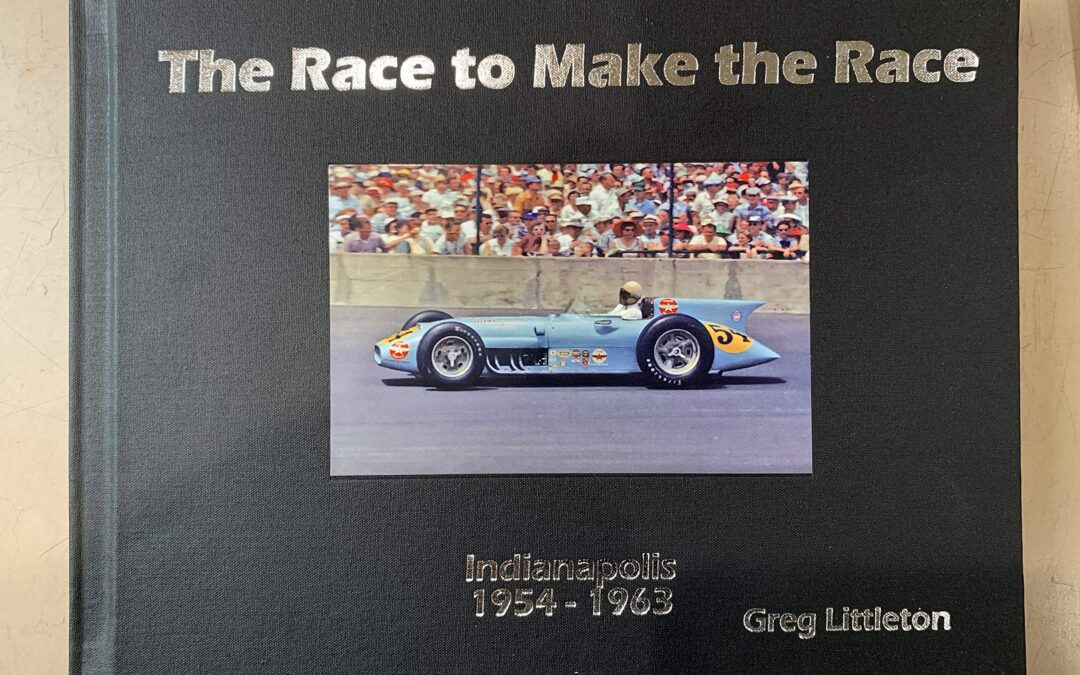
SIGNED
In his new book “The Race to Make the Race” Littleton chronicles a 10-year span (1954-1963) which was the peak roadster years at Indy and records what went on for every qualification attempt during this time period and each lap speed even if the attempt was yellow flagged. There is no mention of the races themselves as those results have been well-documented over the years.
Today’s 500 is lucky to attract 33 cars some years, but there was a time when the 500 really did have an actual Month of May and sometimes more cars went home than made the starting fields. Littleton’s book records by the actual time of day, weather conditions, attendance and all of the other happenings both on the track and in the Garage Area.
There are a lot of details in the book that you will never see anywhere else today. During the years in question the drama around the efforts to find speed just to qualify were often nearly as interesting as the actual race.
“While I was doing the Roadsters book I got the idea about doing a book on qualifications for the Indy 500,” said Littleton. “I got some qualifying information from the Speedway records when I was doing my first book. It was fun to do. I wanted to give the story on the successes and struggles each driver went through to try and make the Indianapolis 500 those years. The Bartholomew County Library was a big help in assisting me. They were able to get the microfilms from the Indiana State Library. I probably made 75 trips down to the local library to gather the information I needed.”
Littleton also mentioned two of the area’s standout racers at Indianapolis. Larry Crockett of Columbus who was the fastest rookie qualifier in 1954 and in the 500-mile race that year he ended up being the top finishing rookie over Pat O’Connor of North Vernon.
Littleton said Crockett, who died in a racing accident in Pennsylvania in 1955 right before he would have attempted to make his second Indianapolis 500, would have been a candidate to win the Indy 500.
“He was so young when he was starting out,” he said. “Nobody knows how his career would have turned out. If he had three or four years on him then I could have given you a better estimate on him. He was fast enough. There were some brave souls in 1954 and they said Larry Crockett was the best young driver in the United States.”
Like Crockett, Littleton gave his assessment on O’Connor who was killed in a first-lap accident in the 1958 race if he too could have won the Indy 500.
“Pat O’Connor definitely could have been an Indy 500 champion,” he said. “The legend of Pat O’Connor just keeps growing around here. You talk to guys and there is no doubt he was a natural. He was so smooth; everything came easy for him. He had the right head for it. He knew the days the car was good enough and the days it wasn’t.”
In documenting every lap of time trials during the 10-year span he chronicled there was one driver that stood out when writing the book was a young driver named Bob Scott in 1954.
“He had a good car in ’54 and on the fourth and final day of qualifying he was not in the show yet,” Littleton explains. “He jumped into a car that was not considered top-of-the-line equipment. He put three good laps together and they were going to be good enough to put him in the race, all he needed was one more consistent lap and he was in, but before he took the checkered flag he pulled into the pits and thus he didn’t qualify for the starting field. He apparently didn’t look at the flagman. He never did say why he pulled off.”
If Littleton had to pick a Mount Rushmore of Indy 500 champions his list would include: Bill Vukovich, A.J. Foyt, Wilbur Shaw and Al Unser Sr. Littleton also gave mention to 1963 winner Parnelli Jones.
“He was probably the least successful great race driver,” he said. “He would consistently beat Foyt in sprint cars, but he only won Indy once.”
On the sale last month of the Indianapolis Motor Speedway to Roger Penske, Littleton had this to say.
“Who else cares enough about racing and has the business acumen than Roger Penske?,” he asked. “He has everything that can make it work. Every decision he makes you may not like, but he has the best interest of the speedway in mind.”
Penske becomes the fourth owner of the track. The Hulman family had owned the track for 74 years.
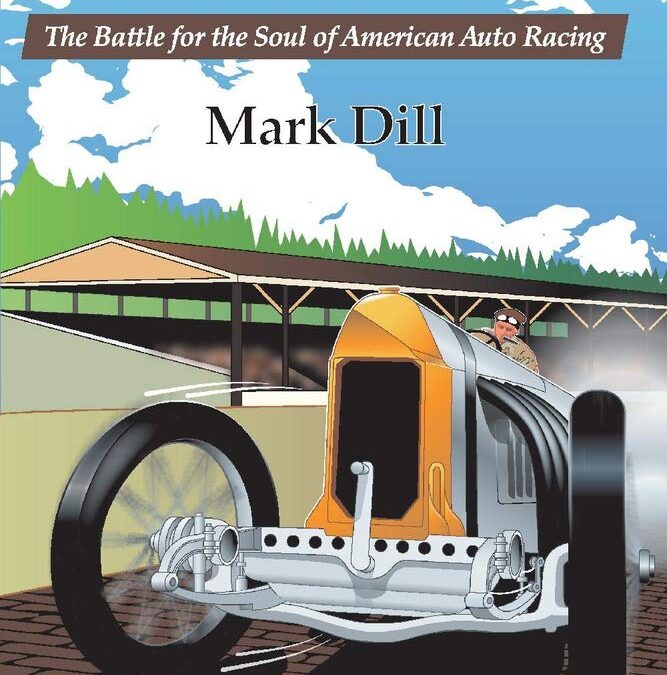
Barney Oldfield riveted his eyes into one of the 3.2 million bricks that paved America’s First Super Speedway. He sought to blot out the din of a packed grandstand and the dangerous gusts that could sweep his car into the unforgiving concrete wall. A record run could restore his reputation as America’s Speed King or cost him his life. A record run could deliver the telling blow in the raging culture war for the soul of American auto racing. Oldfield has the fastest car in the world, and now he must prove himself as America’s champion and ensure the success of his friend Carl Fisher’s titanic battle to raise the modern Indianapolis Motor Speedway up from a fallow cornfield. It’s May 1910 and you have a front-row seat.
The Legend of the First Super Speedway thrusts you into the early 20th century with vivid interpretations of auto racing and what it would be like to walk among the people and grasp their world view. You will meet the rugged characters of the era as they get “corned” on whiskey, chew “chaw,” and bounce violently as they scorch the bricks of America’s first speedway. You will ride with them on trains, bound across the craggy terrain of road races, and step over dead horses rotting in the street. The world convulsed with technological change, and the winners mastered it.
Everything unfolds through the eyes of protagonists Barney Oldfield and Carl Fisher as they grapple with a cultural battle for the soul of American auto racing. Most importantly, early auto racing’s good, bad, and ugly are put before you in an unvarnished fashion. Why? Because it really happened. No storyteller needs to dramatize a single detail because the amazing events actually took place and the awe-inspiring people behind them walked the Earth just as you do now.
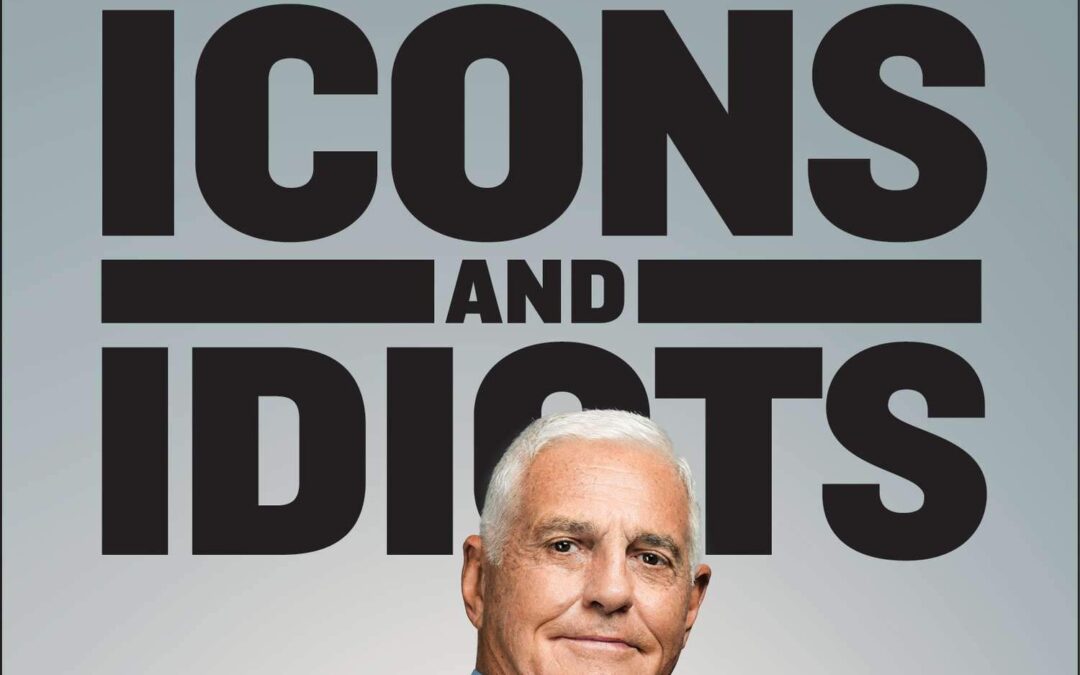
When Bob Lutz retired from General Motors in 2010, after an unparalleled forty-seven-year career in the auto industry, he was one of the most respected leaders in American business. He had survived all kinds of managers over those decades: tough and timid, analytical and irrational, charismatic and antisocial, and some who seemed to shift frequently among all those traits. His experiences made him an expert on leadership, every bit as much as he was an expert on cars and trucks.
Now Lutz is revealing the leaders—good, bad, and ugly—who made the strongest impression on him throughout his career. Icons and Idiots is a collection of shocking and often hilarious true stories and the lessons Lutz drew from them. From enduring the sadism of a Marine Corps drill instructor, to working with a washed-up alcoholic, to taking over the reins from a convicted felon, he reflects on the complexities of all-too-human leaders. No textbook or business school course can fully capture their idiosyncrasies, foibles and weaknesses – which can make or break companies in the real world.
Lutz shows that we can learn just as much from the most stubborn, stupid, and corrupt leaders as we can from the inspiring geniuses. He offers fascinating profiles of icons and idiots such as…
- Eberhard von Kuenheim. The famed CEO of BMW was an aristocrat-cum-street fighter who ruled with secrecy, fear, and deft maneuvering.
- Harold A. “Red” Poling: A Ford CEO and the ultimate bean counter. If it couldn’t be quantified, he didn’t want to know about it.
- Lee Iacocca: The legendary Chrysler CEO appeared to be brillant and bold, but was often vulnerable and insecure behind the scenes.
- G. Richard “Rick” Wagoner: The perfect peacetime CEO whose superior intelligence couldn’t save GM from steep decline and a government bailout.
As Lutz writes:
We’ll examine bosses who were profane, insensitive, totally politically incorrect, and who “appropriated” insignificant items from hotels or the company. We’ll visit the mind of a leader who did little but sit in his office. We’ll look at another boss who could analyze a highly complex profit-and-loss statement or a balance sheet at a glance, yet who, at times, failed to grasp the simplest financial mechanisms—how things actually worked in practice to create the numbers in the real world.
The result is a powerful and entertaining guide for any aspiring leader.
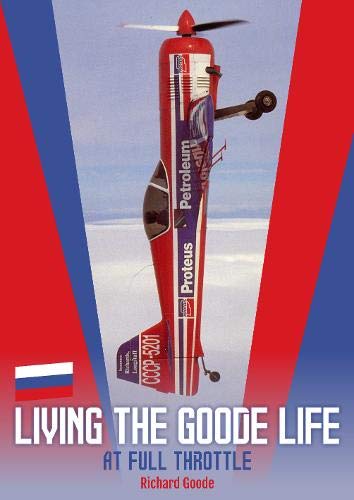
This is an extraordinary story, beginning with a bare-foot colonial childhood, and indeed not speaking English until he was four, yet ending up at Cambridge, ultimately dealing at the highest levels of the Russian aviation industry. Richard Goode’s life has been a fascinating series of activities, both social and business, dealing with an incredible range of people from the notorious Ugandan dictator, Idi Amin, to whom he was selling banknotes (legally) to a car dealer who was embroiled in the Brinks-Mat gold robbery (illegally); dealing with Russian spies at the behest of MI5; international corporate headhunting and aerobatics at the highest levels. And all this with a huge zest for living life to the full.
Highlights of his life have included:
- as a teenager, hitchhiking from London to Cape Town
- becoming one of the world’s top aerobatic pilots and making his own very successful aerobatic aircraft
- buying the first privately owned Russian aeroplane in the West and then acting as a sales agent for Sukhoi
- selling over 450 aircraft and the world’s only privately-owned Harrier jet fighter
- establishing a barely-credible business sending people from the West to fly front-line Russian jet fighters
- Totally restoring three significant English listed country houses and a run-down tea estate in Sri Lanka
- Owning a wide variety of cars from old bangers to Jaguar XKs, vintage Rolls-Royces to modern Ferraris
Throughout, his life been anything but straightforward, with a fair share of crashes and calamities. Financially, he narrowly avoided meltdown in the ruinous Lloyds insurance crash of the 1990s; he successfully faced up to the Russian Mafia and was even served with an Interpol arrest warrant! Most dramatic was the structural failure of his aerobatic plane during a public display resulting in a barely-survivable, catastrophic accident, leading to three months in a hospital bed.
We live in a very sanitised and protected world and it is refreshing to read this story about a man who has been prepared to take risks and also to accept the consequences of them, whether positive or negative. A thrilling, real-life tale.
This book is complemented by a rich selection of appealing and fascinating images.
- Jacketed Hardback, 376 page extent, 240 mm x 170 mm in portrait format
- Over 150 colour & b/w photos

Inspiration and expert advice for planning and driving road trips around the world – including 50 suggested routes
Road Trip: A Practical Manual is aimed at inspiring readers to take a road trip, while providing practical advice to help them to do so. Whether looking at popping over to Europe for a quick circuit, hankering to drive the classic routes of North America, or even aiming to cover a clutch of African countries, there is something for everyone. Importantly, every road trip featured is possible without specialist equipment and, indeed, each and every trip could possibly be completed in a hire car – though for a select few a four-wheel drive hire vehicle would be advisable.
The author offers a wealth of advice from his experience taking road trips around the world. From hiring cars and paperwork, to what to take, driving laws, crossing borders and emergencies, the engaging text aims to give the reader confidence to fulfill his/her dreams.
The second part of the book provides a wide range of route suggestions, based on the author’s own experiences on six continents. Road Trip: A Practical Manual is a fascinating guide, which will, hopefully, inspire readers to turn their independent travel dreams into reality.
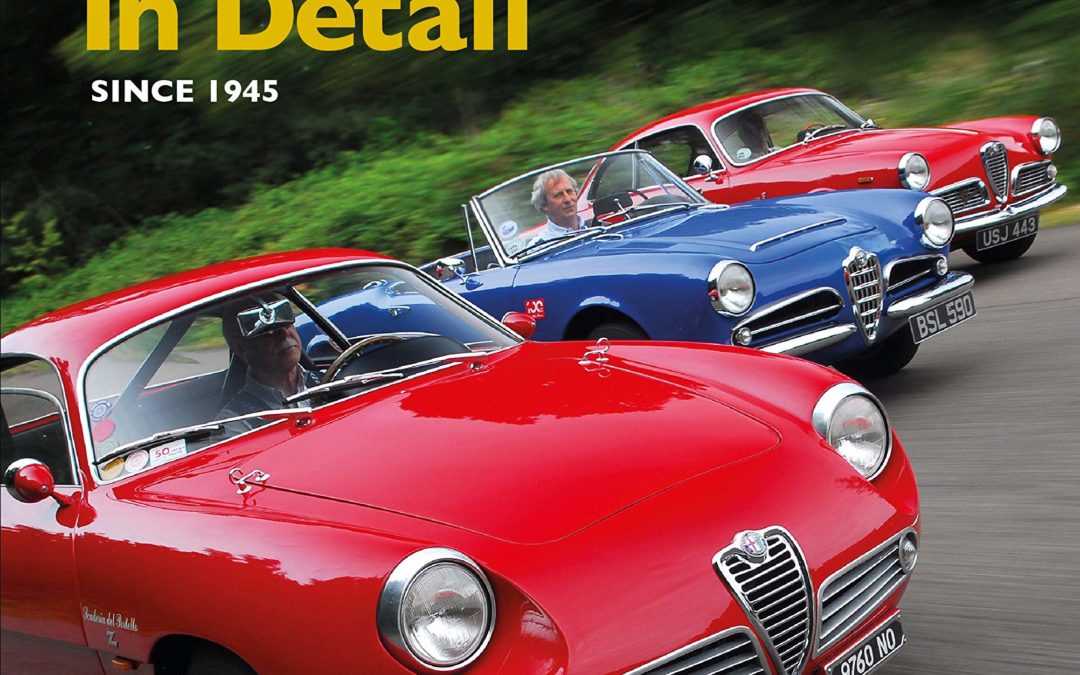
When you think of Alfa Romeo, it is the Italian’s company’s sports cars, above all, that fire the imagination, since they encapsulate everything that is great about the brand. In successive dynasties of fixed-roof coupés and convertible spiders, Alfa Romeo has built one of the greatest canons of work of any car maker in the world.
The appeal of Alfa Romeo’s sports cars is, of course, partly down to their aesthetic eminence. A host of talented designers created their best work for Alfa – Giorgetto Giugiaro’s Giulia Sprint GT, Franco Scaglione’s 33 Stradale and Pininfarina’s Duetto Spider, to name but a few – but style was only ever a part of the story. Drivers love Alfa Romeo coupés and spiders, too, because technically speaking, these cars were in a class of their own. Alfa Romeo consistently employed elements from much more expensive machinery, democratising them into its sports cars. One can cite gearboxes with multiple ratios, all-round disc brakes, lightweight aluminium engines, perfectly balanced weight distribution and many more.
Alfa Romeo Coupes and Spider In Detail since 1945 celebrates Alfa Romeo’s most iconic sporting machinery. From the earliest sports cars of its formative years right up to the present day, every Alfa coupé and spider is described in detail. Included are exotics like the 6C 2500 Freccia d’Oro, Montreal and 8C Competizione; focused enthusiast cars like the Giulietta Sprint Veloce, Giulia GTA and 4C; comfortable touring machines such as the 2600 Spider and Giulia GTC; iconic “everyman” sports cars like the Giulia Spider, Alfetta GTV and Alfasud Sprint; and genuinely unique projects such as the ES-30 SZ. Also included are many coachbuilt cars, official concepts and show cars.

•Incredible miniature Porsches, photographed in ‘real-world’ settings – each model is 1/43rd scale
•All of the eight 911 generation in 99 models, among them the Porsche ‘Fledermaus’ (prototype TS 901), Porsche 901/911 and the Porsche 911 Carrera S (Porsche 992)
•Handy Porsche compendium, in chronical order from 1962 to 2019
•Informative, historical and technical details to each and every model
Five decades, eight generations, one number: 911.There is no other car as legendary as the Porsche 911. Old-timer, new release or racing car legend; fans worldwide are fascinated.
The Porsche 911, an epitome of a German sports car, is a world-renowned import success and dream car. In this multi-faceted work, the 99 most important models of the legend are presented chronologically as miniatures in a 1/43rd scale, each with a picture and text page, in an informative, entertaining and surprising way: as Urban Outlaw, flat speedster, Germany’s Next top model, as a wolf in sheep’s clothing… all put together by author Jörg Walz, a collector since childhood.
The author places the snapshots of vehicle miniatures in a ‘real’ environment and presents a well-assorted digital car museum. The charming interplay between a small car model set into a lively background is fascinating. The originally spontaneously created photo collection is completely simply “iPhotographed”, without further aids or artificial arrangements, initially taken for Instagram.
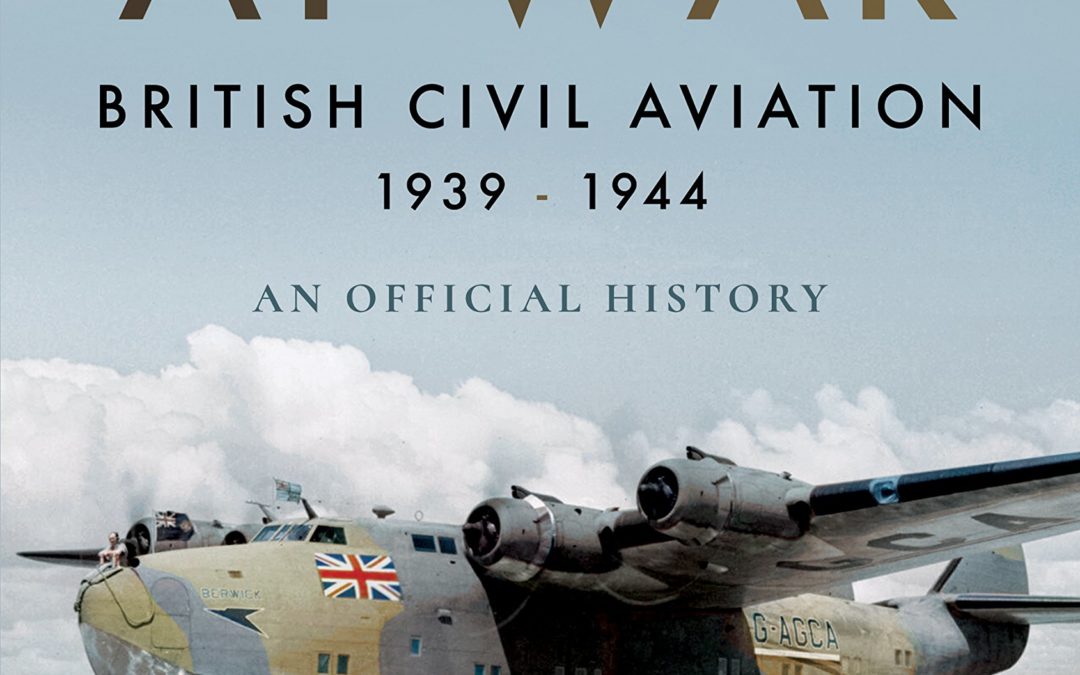
The brave efforts of the pilots and crew of the RAF during the Second World War are well-known but there was another body of aviators that played a significant role in the conflict – the men and women of the civilian airlines.
The British Overseas Airways Corporation (BOAC) was formed shortly after the outbreak of war in November 1939 by the amalgamation of Imperial Airways and British Airways. During the war BOAC operated as directed by the Secretary of State for Air, initially as the transport service for the RAF and with no requirement to act commercially. The inaugural BOAC had eighty-two aircraft, a large proportion of which were seaplanes and flying boats. With 54,000 miles of air routes over many parts of the world, ranging from the Arctic to South Africa, from the Atlantic coast of America to the eastern coast of India, the aircraft of the BOAC kept wartime Britain connected with its colonies and the free world, often under enemy fire. Over these routes, carrying mail, cargo and personnel, the men and machines of BOAC flew in the region of 19,000,000 miles a year.
There can rarely have been a moment, throughout the war, when aircraft of the British merchant air service were not flying somewhere along the routes, despite losses from enemy action. This book explores much of their war history between 1939 and 1944 (the year that marked the 25th anniversary of British commercial aviation), something of their lives and their achievements in linking up the battlefronts – at times cut off from any direct land or sea contacts with the Home Front – and in transporting supplies through the new, dangerous and often uncharted regions of the air. With the ‘Speedbird’ symbol or the Union Flag emblazoned on its aircraft the BOAC really did fly the flag for Britain throughout the wartime world.

26 tips & tricks to improve your car * Quick and simple cleaning hacks * Use household objects … the family on long journeys (Concise Manuals)
Driving, owning, repairing and maintaining a car can be expensive, frustrating and time-consuming.
Car Hacks is here to explain how to use the things you have around your home to improve your car life, and balance your well-being in the process. From ensuring you never lose a screw when repairing your car, to spending less on fuel, and using cereal boxes to keep you car tidy, this book will open your eyes to the joys of car hacking.
Here are some favorite hacks you’ll find in Car Hacks:
- Interior hacks – Storage, cleaning, fixes, upgrades
- Exterior hacks – Bodywork, mechanical, quick repairs using everyday items
- Workshop hacks/Garage hacks – Working on your car
- Journey hacks – Easy storage solutions, luggage packing hacks, avoiding motorway food prices
- Driving hacks – Getting better fuel economy, avoiding motorway fuel prices, avoiding jams
- Family hacks – Entertaining kids (and adults!), simple tablet holders, ensuring everything stays charged, cable tidies, adding WiFi to your car
- Everyday hacks
- PLUS ‘Tool Hacks’ box outs placed throughout the book

The latter half of the twentieth century was full of illusions. We lived in an illusion of peace, an illusion that Europe was not at war and that the horrors of the Second World War would not be repeated. But in reality, society was preparing for the next war. As children we donned thin plastic ponchos and practiced how to survive a chemical or nuclear attack out in the fields. The threat of a new military conflict hung in the air constantly. History now denotes this time of apparent peace more accurately as the Cold War. It lasted for several long decades, passed through various phases, crises, milestones, victories and defeats, but peace was only illusory.
Air forces were one of the most important military branches during this era. East and West competed in speed, flying range and numerical superiority. Technical development forced both sides to quickly replace large numbers of machines, which is why we can now find surplus aircraft from the Cold War on display in military museums.
As I started my search, I soon found that, as opposed to old cars, planes are not often found in barns or backyards. It is not easy for private owners to get their hands on military machines. I hence focused on museums and associations for aviation enthusiasts. The Czech Republic is a wonderful country in this sense, because Czechs are sentimental people and try to keep things alive even if it does not make sense financially. I presume that is why we have so many aviation museums. But the thing is, I am not interested in those nicely restored, polished planes. I am after old, rusty ones. And so I had to look for collectors who could not afford expensive restorations and who were showing history the way I wanted it – authentic and dilapidated. And since repairing planes is such a demanding hobby, I ended up finding plenty. The photos were taken 2014–2019 in five countries: Czech Republic, Slovakia, Germany, Poland and Cuba.

Flying the “open cockpit convertible” Ercoupe
Fly-About Adventures and the Ercoupe offers real flying adventures in a wonderful classic convertible type Ercoupe airplane. Come fly with me to OshKosh, Sun-N-Fun, the Arkansas Picnic, and other cross country trips. Experience unique discovery and the unbelievable. Many events are supported with neat color photo’s. Words are good but nothing says so much as pictures. The book also provides insight to what it’s like to own such a fun filled open cockpit convertible aircraft. There are also photo’s of modifications by owners such as paint schemes, instrument panels, etc. Over 5,500 of these aircraft and 11 models were built by several companies between 1940 and 1970. 70 years after the first Ercoupe was built, there are thousands still airworthy, affordable, and being flown by pilots seeking their remembrance. With a bit of imagination, you have the opportunity to fulfill your dream of flying adventures too.
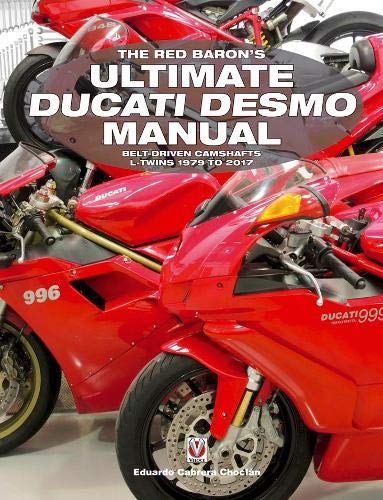
If you’re passionate about your Ducati, wish to know your motorcycle in real depth, and keep it in perfect shape with the loving care she’ll only receive from you, The Red Baron’s Ultimate Ducati Desmo Manual is your book.
This comprehensive service manual for you and your Ducati will help you to perform all maintenance and repair operations in your own home workshop. From basic servicing to the most complex repair and adjustment operations, everything is covered.
The bikes covered in this book range from the first 1980 ‘Pantah’ to the ‘Testastretta Evoluzione’ models, and it spans 30 years of Ducati models. Within these pages you will discover the secrets of your pride and joy, and be enabled to enjoy making repairs or carrying out maintenance in your workshop or garage.
With the rhythm of their mechanical soul, and powerful twin heartbeat, Ducatis are motorcycles for true lovers of voluptuous Italian style and character. The author, Eduardo Cabrera, is better know in the Spanish ducatisti community as Baron Rojo (Red Baron), a lifelong Ducati owner and enthusiast, and a regular contributor to the Spanish Ducati online forum.





















